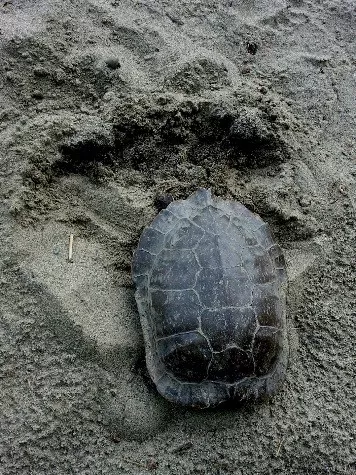Date
June 10, 2015
Body
by Lisa Liotta
Image
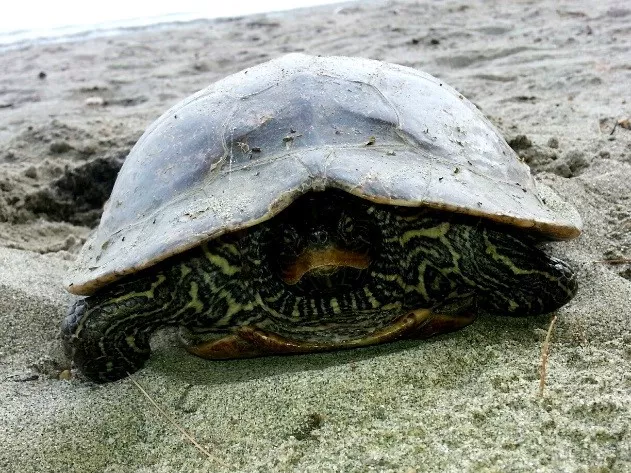
|
| The Proud Mother |
This wasn’t just any park visitor, it was a Northern Map Turtle. Map Turtles aren’t endangered in our state, but they are a species of special concern, which means they are ones that we want to keep an eye on. Map turtles are in a few lakes besides Lake Champlain, but Lake Champlain is the mother lode.
Map Turtles live in the bottom of rivers and lakes, where there are places to bask on fallen trees, and they highly prefer unshaded sites with sandy soil in which to nest. With the Park’s sandy beach adjacent to an undeveloped natural area of Malletts Bay, Niquette Bay State Park had just what this visitor was looking for. Lake Sand Beach natural communities are also uncommon in Vermont, with most of them having been developed as recreation areas or private homes. (Vermont’s largest remaining Lake Sand Beach, along with its most intact natural dune system, is protected at Alburg Dunes State Park.)
Image
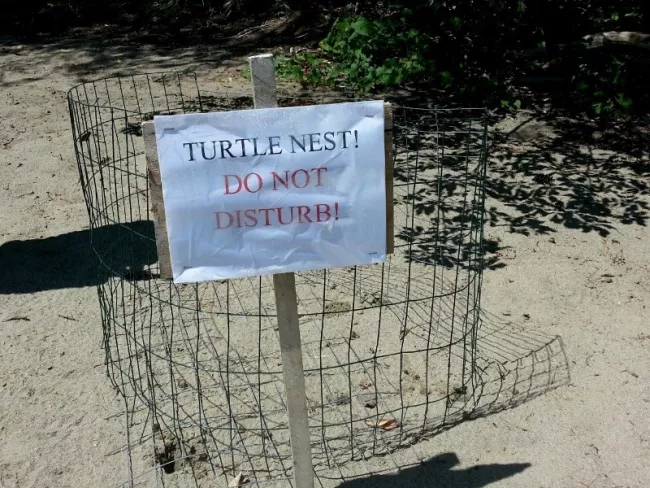
|
| Quick Thinking by Lisa and Megan |
Within 90 minutes of my encounter with this park visitor, she had completed her labor and was long gone. After laying eggs and covering the nest using her hind feet, a mother turtle's responsibilities are complete. Now, it was up to nature to take its course. Left undisturbed, the eggs would hatch in about 70 days, depending on the weather. The problem was, this female turtle chose the spot on the beach that was the busiest of all for all of the other park’s other visitors; dead-center and right next to a picnic table.
Although turtle nests can be quite inconspicuous, especially in sand after it’s been gently washed with rain, this one was poorly placed for survival. Quickly, Park Attendant Megan Kane and I constructed and placed a small cage and sign to protect the nest from disturbance.
Image
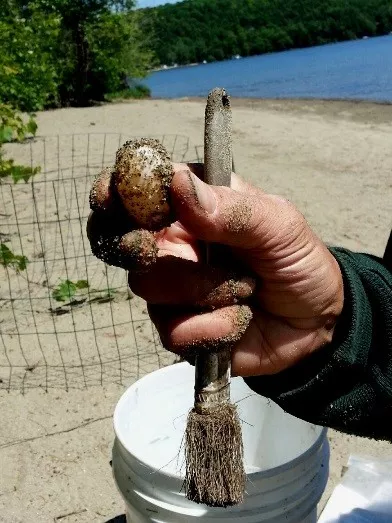
|
| Soon-to-be Turtle |
The following Wednesday, Steve came to the park to help. After removing the wire cage, he very carefully removed the sand a little at a time using a paintbrush so as not to break the eggs, uncovering sixteen eggs in total. Map turtles typically lay between six and twenty eggs, each one measuring approximately 1.25” long, in a cluster located 4-5” beneath the surface.
Image
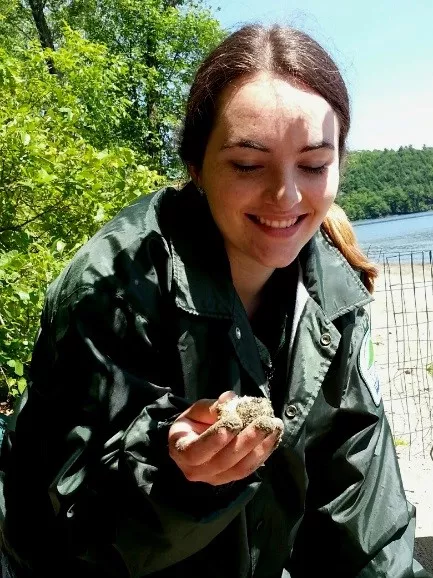
|
| Park Attendant Megan Kane |


